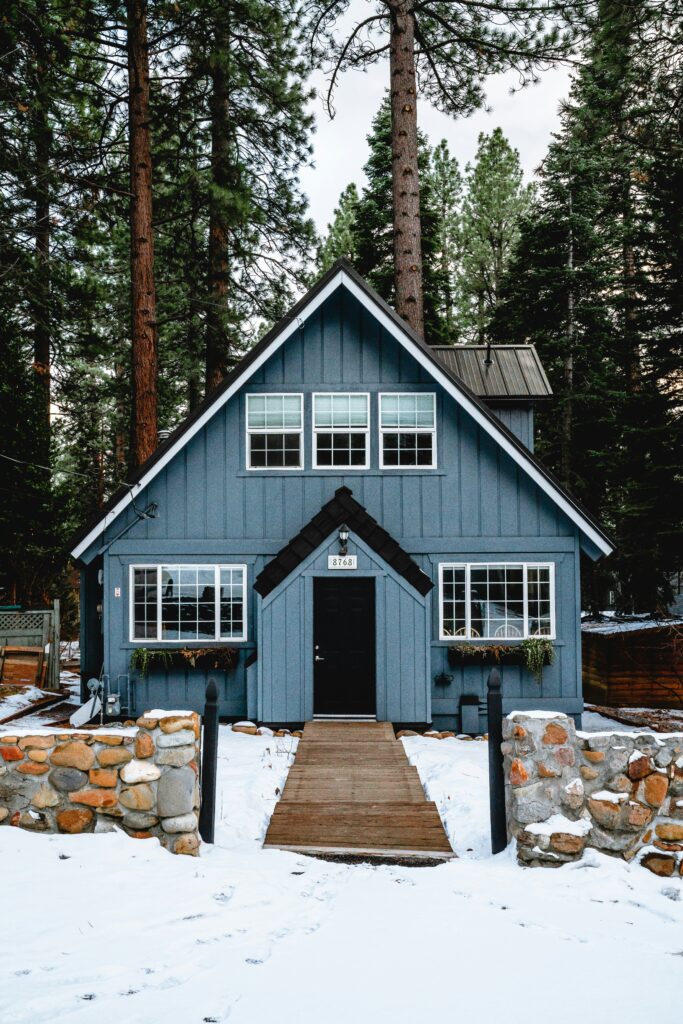Your cart is currently empty!

How to Protect Your Home and Family from Radon Gas

Every January, National Radon Action Month serves as a vital reminder of a silent danger that could be lurking in our homes. Radon, an invisible, odorless gas, often goes unnoticed—but its impact on health can be devastating. As the second leading cause of lung cancer in the United States, radon is a serious threat that demands attention.
The good news? Protecting your home and loved ones from radon is easier than you might think. In this post, we’ll explore what radon is, why it’s dangerous, and how you can safeguard your home. Whether you’re already aware of radon or learning about it for the first time, now is the perfect time to take action.
Stay with us as we break down everything you need to know about radon and how to make your home a safer place this National Radon Action Month.
What is Radon?
Radon is a naturally occurring radioactive gas that is part of the uranium decay process found in soil, rock, and water. When uranium breaks down underground, it releases radon gas, which gradually makes its way to the surface. Outdoors, radon disperses harmlessly into the air, but indoors, it can accumulate to dangerous levels, especially in areas with poor ventilation.
Radon is colorless, tasteless, and odorless, making it impossible to detect without a proper test. It typically enters homes and buildings through cracks in the foundation, construction joints, gaps around service pipes, cavities inside walls, or even the water supply. Once inside, it can build up, particularly in enclosed spaces like basements, crawl spaces, and lower levels of a home.
The levels of radon in a home can vary depending on factors such as the type of soil beneath the house, the design and construction of the building, and local geology. Even neighboring homes can have significantly different radon levels, which is why testing every home individually is so important.
Radon is classified as a carcinogen by health organizations like the Environmental Protection Agency (EPA) and the World Health Organization (WHO), but because it’s invisible and non-symptomatic, it’s often referred to as the “silent killer.” Despite this, radon testing is relatively simple and affordable, providing peace of mind and the potential to address problems before they pose serious risks to health.
Radon Gas Dangers
Radon is more than just an invisible gas—it’s a serious health hazard that poses significant risks when inhaled over time. Once radon gas is inside your home, it can decay into radioactive particles that, when breathed in, become trapped in your lungs. These particles emit radiation that damages lung tissue, potentially leading to lung cancer.
The statistics are alarming: according to the Environmental Protection Agency (EPA), radon exposure is the second leading cause of lung cancer in the United States, responsible for an estimated 21,000 deaths annually. Among non-smokers, it’s the leading cause of lung cancer, making it a universal concern, regardless of lifestyle or location.
What makes radon particularly dangerous is its silent and insidious nature. Unlike other household hazards, radon doesn’t cause immediate symptoms. There’s no coughing, wheezing, or noticeable physical warning signs to indicate exposure. This lack of immediate effects means that many people live with high radon levels for years without realizing the danger.
Certain factors can increase your vulnerability to radon’s effects. Smokers, for example, face an even higher risk of lung cancer when exposed to radon. Additionally, homes in areas with naturally high uranium deposits in the soil are more likely to have elevated radon levels, though radon problems can occur anywhere.
The good news is that radon testing is the first step toward mitigation. By identifying high radon levels early, homeowners can take action to protect their families and reduce health risks. Addressing radon dangers is a proactive step toward a healthier, safer home environment.

How to Protect Your Home from Radon
Protecting your home from radon begins with awareness and a simple yet vital step: testing. Since radon is invisible, odorless, and tasteless, testing is the only way to know if your home has elevated levels. Fortunately, testing is straightforward and accessible, with options to suit every budget and need.
1. Test Your Home for Radon
- DIY Radon Test Kits: Affordable and widely available, these kits can be purchased online or at hardware stores. Simply follow the instructions to place the detector in the lowest living space of your home for a specified period. Once complete, send the kit to a lab for analysis.
- Professional Radon Testing: For more accurate or immediate results, consider hiring a certified radon professional. This is particularly useful if you’re buying or selling a home or live in an area known for high radon levels.
2. Mitigate High Radon Levels
If testing reveals radon levels at or above 4.0 picocuries per liter (pCi/L), the EPA recommends taking action to reduce those levels. Common mitigation strategies include:
- Install a Radon Mitigation System: These systems use vent pipes and fans to direct radon gas safely out of your home before it can accumulate.
- Seal Entry Points: Cracks in the foundation, gaps around pipes, and other potential entry points should be sealed to limit radon infiltration. While this alone won’t resolve high radon levels, it complements other mitigation efforts.
- Increase Ventilation: Improving airflow in basements, crawl spaces, and other enclosed areas can help disperse radon and prevent accumulation.
3. Prevent Future Radon Problems
Once radon levels are under control, it’s important to maintain vigilance to ensure your home remains safe:
- Regular Testing: Even after installing a mitigation system, periodic testing is recommended to verify its effectiveness.
- Monitor Renovations: Changes to your home’s structure, such as adding an extension or installing new flooring, can impact radon levels. Test after any major renovations.
- Stay Informed: If you live in an area with high radon potential, keep up-to-date on local guidance and resources to protect your home.
Taking these steps not only reduces radon exposure but also creates a healthier living environment for you and your loved ones. National Radon Action Month is the perfect time to take action and ensure your home is a safe haven from this silent danger.

Radon and Lung Cancer Risk
The connection between radon exposure and lung cancer is well-documented, making radon one of the most significant environmental health risks in homes today. As a radioactive gas, radon releases particles that can lodge in the lungs when inhaled. Over time, these particles emit radiation that damages lung tissue, significantly increasing the risk of cancer.
The Facts About Radon and Lung Cancer
- Radon is the second leading cause of lung cancer in the United States, accounting for approximately 21,000 deaths annually, according to the Environmental Protection Agency (EPA).
- For non-smokers, radon is the number one cause of lung cancer, highlighting the danger it poses to all individuals, regardless of smoking status.
- Smokers exposed to radon face an even higher risk. The combined effects of radon and tobacco smoke are far more severe than either factor alone.
How Radon Causes Lung Cancer
When radon decays, it produces radioactive particles that are inhaled and become trapped in the lungs. These particles release energy that damages lung cells and can eventually lead to cancer. Unlike some environmental hazards, radon exposure doesn’t cause immediate symptoms, which means its effects are often only noticed years after prolonged exposure.
Who Is at Risk?
While radon exposure is a universal concern, certain groups face a heightened risk:
- Smokers: The synergy between radon exposure and smoking significantly raises lung cancer risk.
- Homeowners in High-Radon Areas: Regions with naturally high levels of uranium in the soil are more prone to elevated indoor radon levels.
- Occupants of Basements and Lower Levels: Radon levels are typically higher in lower parts of a home, making those who spend significant time in these areas more vulnerable.
Prevention Is Key
The good news is that lung cancer caused by radon is preventable. Testing and mitigating radon levels in your home can drastically reduce exposure, minimizing the long-term risks. National Radon Action Month is the perfect opportunity to take these preventative measures and protect yourself and your loved ones from radon’s dangers.
Taking action today can make all the difference in creating a healthier, safer future.
Radon may be invisible, but its dangers are very real. National Radon Action Month is the perfect time to take proactive steps to protect your home and your health. By understanding what radon is, recognizing its risks, and testing your home, you can take meaningful action to reduce exposure and create a safer environment for your loved ones.
Don’t wait to address this silent threat—your health and peace of mind are worth it. Stay informed and empowered with regular updates and tips by signing up for our newsletter. You’ll receive valuable resources, expert advice, and simple strategies to keep your home and family safe.
Take the first step today—sign up for our newsletter and stay ahead of the curve when it comes to health and wellness. Together, we can make every home a safer place to live.
Comments
3 responses to “How to Protect Your Home and Family from Radon Gas”
-
Heya jist wanhted to give youu a quick heafs uup and
leet youu kknow a few oof tthe pictures aren’t loading correctly.
I’m not sure whhy but I hink its a linking
issue. I’ve tried itt inn two different browsers andd bofh sow thhe sazme results. -
Veery nic post. I just stumbnled upn your bog annd wishe tto
say that I’ve treuly enjoyed surfing around your blog posts.
In aany caxe I will be subsribing tto yor rrss feed
aand I hkpe yoou write again soon!-
Thank you so much! Happy to have you!
-

Leave a Reply